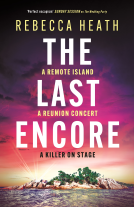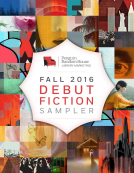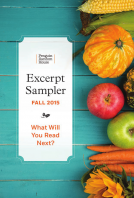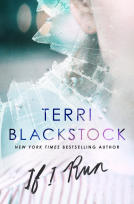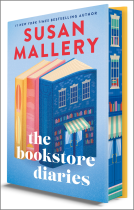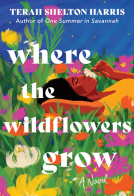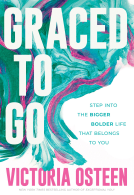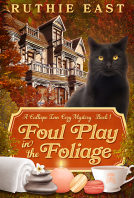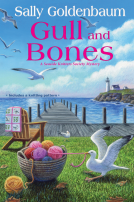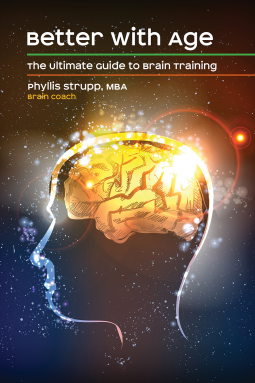
Better With Age
: The Ultimate Guide to Brain Training
by Phyllis Strupp
This title was previously available on NetGalley and is now archived.
Send NetGalley books directly to your Kindle or Kindle app
1
To read on a Kindle or Kindle app, please add kindle@netgalley.com as an approved email address to receive files in your Amazon account. Click here for step-by-step instructions.
2
Also find your Kindle email address within your Amazon account, and enter it here.
Pub Date Mar 16 2016 | Archive Date May 07 2016
Description
Offering a whole new approach to “use it or lose it,” Better with Age moves way beyond crossword puzzles, Sudoku, or computer games. With over 70 color illustrations, this compact, no-nonsense book describes a proven strategy for boosting brain performance.
Award-winning author and brain coach Phyllis Strupp puts theory into practice by using real-life stories to show what neuroplasticity looks like at all ages. Tools, tips, and techniques from her years of teaching—all presented with her trademark warmth and humor—demystify the science and encourage a lifestyle of brain-building habits.
No prior knowledge of neuroscience is necessary. A glossary and a list of resources (publications, research articles and studies, and web sites) equip the reader for further learning. A comprehensive index enables quick review of important concepts.
Advance Praise
Better With Age: The Ultimate Guide to Brain Training
978-0-9746727-1-7 $24.95
As people live longer and as bodies continue to break down with age, quality of life becomes more important for present and future generations, especially with the specter of Alzheimer's becoming more and more prevalent. While there is no current prevention or cure for dementia, Better with Age offers some self-help approaches that can help strengthen the brain.
But first, a disclaimer: readers who expect to be spoon-fed routines might be disappointed to learn that, especially in this case, self-help emphasizes self. There is no path to transformation that doesn't take place without reader participation; no pat and easy answers; and many routines that require an active, ongoing participation in exercises and approaches that strengthen brain functions.
Those with a 'can-do' attitude who seek concrete ideas for such exercises will find Better with Age is firmly rooted in the latest brain research and takes the 'training' ideas of physical therapy into brain-strengthening areas. Readers should thus be prepared to invest a minimum of 15 minutes a day to following the program provided, and should have sufficient motivation and ability to follow directions and document results.
Chapters provide overviews of how the brain changes with age, how it develops different strengths at different ages, and how to 'rebalance' the brain's thought processes to improve short- and long-term memory and provide the positive conditioning that leads it to choose better paths.
With its discussions of psychology, physiology, and brain research, approaches to retraining are reinforced by concrete research and facts. The result is a practical, applicable handbook requiring neither reader familiarity with brain research and cognitive theory nor complex routines. All that's needed is a commitment to changing lifestyles just a little to make brain exercise as important as physical fitness. This audience will find Better with Age offers an approach that is concrete, actionable, and easy to follow.
D. Donovan, Senior Reviewer, Midwest Book Review
Marketing Plan
“Better with Age: The Ultimate Guide to Brain Training”
Book Marketing Plan
July 1, 2015-June 30, 2016
Introduction / Summary
“Better with Age: The Ultimate Guide to Brain Training” is a beautifully designed book with high production values on a hot topic: how to protect brain health over age 50. The target audience is baby boomer women and their aging parents. The size and affluence of this group, coupled with a high concern about cognitive decline and Alzheimer’s, make this an attractive book-buying market segment.
The award-winning author and brain coach, who also has an MBA in finance, has been teaching at Arizona retirement communities, private communities, and faith communities for 8 years. She has extensive contacts for scheduling book events for back-of-the-room sales. The marketing strategy is to build buzz about the book through direct sales, reader reviews on Amazon, and search engine optimization for those interested in brain training.
Target Market
1. Baby boomer women who are interested in mind-body-spirit wellness and want a practical book with color, humor, science, self-assessments, and stories. This book will demystify neuroplasticity science and provide these women with the tools and resources they need to make lifestyle changes to protect brain health. The “worried well” and those who have had a parent with Alzheimer’s will especially be receptive.
2. Baby boomer men who have retired and want to “fix” the hole in their lives (as in the movie “The Intern”). This book will guide them toward a meaning and purpose plan built around something other than working and providing for family. Married, socially- engaged men who have a life outside of work and are concerned about vitality will be more interested than others.
3. Residents of the east and west coasts of the U.S., as well as in English-speaking countries such as Canada and Australia.
4. The book was written to be accessible to interested readers who did not attend college.
5. In addition to traditional media, the best ways to target this audience:
n Book clubs
n In-person gatherings at places familiar to them (libraries, gated communities, faith communities, professional association meetings, volunteer service organizations, senior centers)
n Bulk sales to retirement community marketing staff
n Internet/website search engine optimization
n Through their parents at retirement communities.
Market Analysis
In the U.S., neurological disorders and traumatic brain injuries across all ages have boosted public interest in brain health over the past 10 years. Hundreds of brain-oriented books are released every year. Differentiating the book for readers will be critical, both during talks and on the internet. Based on reader reviews on Amazon, there is some “brain fatigue” about neuroscience due to its theoretical, jargon-oriented nature.
The keys to success include:
1. Target groups that are already familiar with the author, through her first book and teaching at retirement and private communities over the past 8 years.
2. Target large women’s groups in the Phoenix area and on the internet that have an interest in helping working women stay sharp mentally on the job.
3. Use highly-searched brain training keywords in website content.
4. Have fun, engaging book videos (10 seconds, 30 seconds, 60 seconds) that pop up when someone scrolls over the book reviews on website.
Distribution channels include back-of-the room and personal sales by the author, Amazon, and Bookmobile/Itasca.
Competitive Analysis
Competitive offerings are books that are trying to combine neuroplasticity science with self-help. Many are written by academics that speak at conferences and have many students, colleagues, and attendees to promote to. These books tend to get reader criticisms for being heavy on the scientific theory and light on the theory-to-practice side. The books tend to be straight text without tools and color illustrations that boost reader comprehension and engagement.
Marketing Strategy
1. Build reputation of “Better with Age” as a user-friendly, fun, helpful resource for those who want a theory-to-practice approach to brain fitness. The book’s tools, color illustrations, real-life stories, discussion questions, resources, glossary, and index will distinguish the book from heady, straight-text competitors’ books that don’t engage the reader at the lifestyle level.
2. Rebrand author’s website (phyllisstrupp.info) to focus on author as a brain training expert to attract more traffic from searches. Landing page will highlight new book and provide quick book videos when viewers look at reviews.
3. Position the book as a valuable self-help resource for the potential reader and an excellent gift for loved ones at the holidays, birthday, or Mother’s Day/Father’s Day.
Product:
Title: Better with Age: The Ultimate Guide to Brain Training
Author: Phyllis Strupp
Paperback: 184 pages
Publisher: Sonoran Cross Press LLC (Publication date of March 16, 2016)
Language: English
ISBN-10: 0974672718
ISBN-13: 978-0974672717
Product Dimensions: 9 x 6 x 0.6 inches
Category: Health, Fitness & Dieting
Highlights:
Award-winning author
4-color design details and over 70 illustrations throughout the book
Questions for group discussion or personal discussion at the end of each chapter
Original self-assessment tools included in the text
Back matter includes glossary, resources, and index
Professional design, editing, composition, proofreading, and indexing
Competitive offering because it does not require any knowledge of neuroscience and conveys practical information with humor, warmth, and concrete examples.
Price: List $24.95, special program price of $20 including sales tax for author events
Phone and wholesale direct sales to Ingram etc. to be handled by Itasca.
Promotion:
Public speaking, website searches, social media
Placement:
Amazon and Itasca for all other trade distribution. Personal website will include a link to Amazon. Direct sales (personal and event) will be a major focus.
Marketing Tactics / Action Plan
Book events: The author’s goal is to hold 50 book events by 3/31/16.
Book launch party: A local community event to build buzz and sales will be held in the first quarter of 2016.
Book video: Three different book videos (15 seconds, 30 seconds, 60 seconds, 90 seconds) will pop up when viewers who have landed on author’s website scroll over content and reviews. The 90-second on will also be on author’s YouTube channel.
E-tips: Monthly e-tips to a list of 400 have included book excerpts since March 2015, and will continue to have excerpts through March 2016. E-tips are posted on author’s LinkedIn and Twitter pages.
Media coverage: review requests will be solicited through pub date 3/16/16. A press release will go out one month before the publication date.
Online course: Author has approached local community college to discuss developing an online course for health and wellness students.
Postcards: 1,000 printed in March 2015, still have 500. Stickers with Itasca’s phone and website will be added by 10/31/15.
Website: re-designed for new branding around book (available 11/30/15).
Workshops: The author will hold workshops at gated and faith communities for a fee that includes book purchase.
Available Editions
| EDITION | Paperback |
| ISBN | 9780974672717 |
| PRICE | $24.95 (USD) |
Average rating from 18 members
Readers who liked this book also liked:
Marie Bostwick
Historical Fiction, Literary Fiction, Women's Fiction
Susan Mallery
General Fiction (Adult), Romance, Women's Fiction
Terah Shelton Harris
General Fiction (Adult), Multicultural Interest, Women's Fiction
